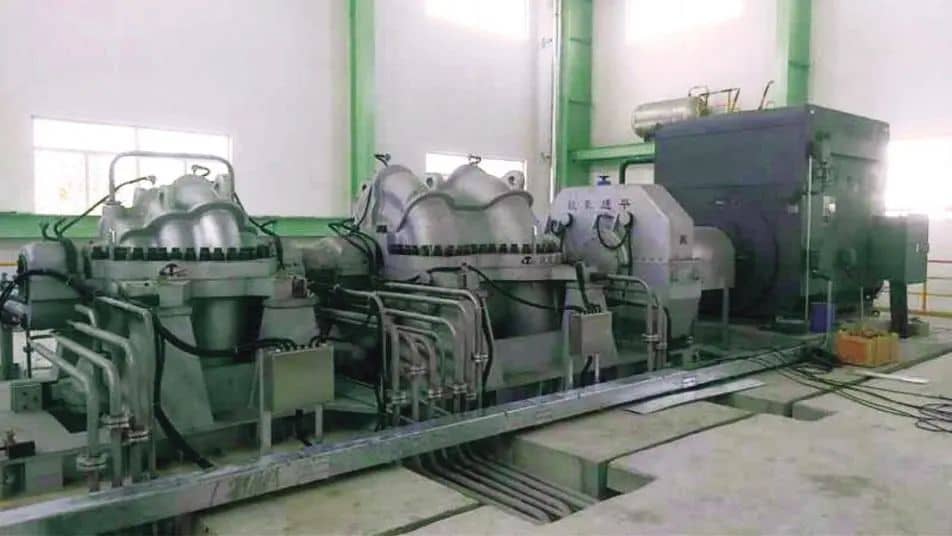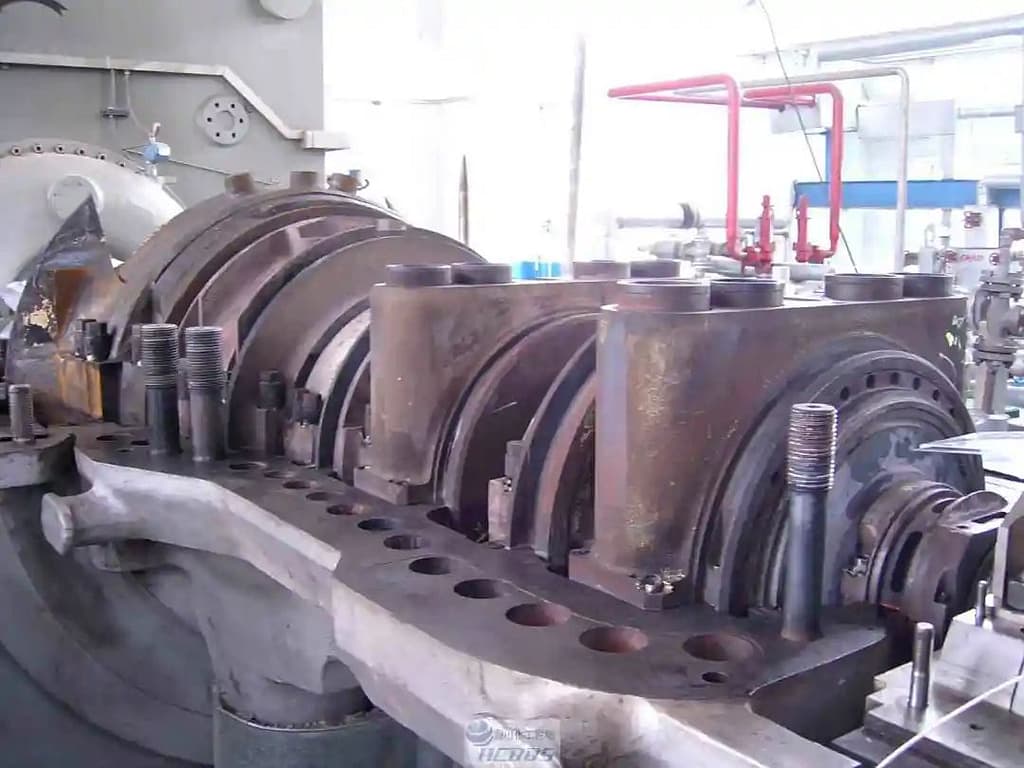The Oil Circuit Cleaning Frequency of Compressor
Ensure the safe operation of turbine compressor units, the oil circuit must be clean and free of impurities. Because even a small amount of impurities into high-speed running bearings, seals, regulating valves and turbine bearings and governors that share a single oil system may cause serious failures. Burn out the bearings, make the regulating valves and governors fail, and endanger the safe operation of the entire unit.
Therefore, the newly installed oil circuit system must be carefully cleaned.First to remove the oil, iron filings, welding slag, oxides, dust and other impurities in the pipeline and its accessories. Ensure that the oil circuit is smooth. The regulating mechanism is accurate and sensitive. The unit is safe to operate. After each deep inspection of the machine, the oil system should also be cleaned.
The oil circuit cleaning method

The oil circuit cleaning method is generally under normal operating pressure. The oil used for unit operation is circulated in the system. So that the oil is cooled and heated within a certain temperature range. Quench heating temperature can be determined according to the specific oil system. A plant stipulates that the syngas compressor oil system is heated to 75 ° C, quench cooling to 50 ° C. Some plants stipulate that the temperature of quench cooling is lower than this. Generally, the shorter the cooling and heating time the better. Due to the large amount of oil in the oil system.The large heat dissipation area, and the limitation of the capacity of heating. It is often necessary to spend enough time to achieve the above requirements.
Generally, it is required to heat from low temperature to high temperature within 1~2h. Hold for 2h, reduce to low temperature with 1h. Hold for 2h and then heat again, and so on. Causing thermal shock. At the same time of cooling, use a wood hammer to beat the pipe wall according to the sequence of the oil path. Especially the weld and the elbow part, so that the oxide and welding slag are loosened and fall off.
How to make the oil washing fast and good
In order to make the oil washing fast and good, we can use the following measures. Intermittently open and stop the oil pump and close and open the oil valve. Washing oil in the pipe will produce vortex flow. Nitrogen is filled into the pipe to make the washing oil produce turbulent flow in the pipe to improve the washing effect. Try to increase the flow rate of oil and increase the flow of washing oil. you can add an appropriate specification of oil pump to increase the oil flow in the pipe.
The heating of the oil can use the heating coils at the bottom of the tank. But the capacity of these coils is limited, the heating speed is too slow. And the coil heating alone often cannot reach the required temperature. So heating with the coil at the bottom of the tank. So one group of hot water, while the other group of cooling water, to alternately heat or cool the oil. If the hot water is difficult, a low-pressure steam pipe can be connected to the inlet side of the cooler.
Each oil inlet pipe, bearing, seal, etc. should be equipped with a filter screen to prevent impurities from entering, and it is also used for oil cleaning inspection. A slag removal basket should be set up at the inlet of the oil return main pipe to collect impurities in the oil return to avoid a large amount of impurities back to the oil tank.
In order to make the oil system cleaning smoothly, we should pay full attention to and do a good job of the preparation before cleaning.
The main preparations before cleaning are as follows:
1) The inside of the oil tank is manually cleaned, cleaned, and finally dried with a woolless cotton cloth, and the dirt is stained with flour balls (oil preparation).
2) Oil system equipment and pipelines such as oil coolers and filters should be disassembled as far as possible for inspection and manual cleaning.
3) The pipeline prepared on site should be cleaned first. For carbon steel pipes, pickling is required; If it is stainless steel pipe, purge it with steam.
4) Remove the filter elements in the lubricating oil, sealing oil and speed regulating oil filters, and then load them into the filter after the oil is washed, and install the temporary filter element wrapped with more than two layers of 100 mesh stainless steel wire.
5) After the oil cleaning, it is necessary to officially run, so I hope that all pipelines can be cleaned.

The cleaning steps are generally carried out in stages.
First stage
Let the oil pass through all the inlet tubing. return tubing, bearing box and sealing oil chamber, etc., rather than through the governor, jump gate valve, automatic regulating valve, etc.; At the same time, the upper tile and the seal of the bearing tile are removed, and the lower tile is left behind, so that the rotor is supported in the cylinder, and the special false tile can also be cleaned with oil to replace the lower tile. Some automatic regulating valves are blocked by oil, and manual bypass valves can be used to connect the inlet and discharge tubing. For those without bypass, such as governor and gate jump valve, temporary pipelines (oil resistant hose) need to be connected to bypass. The number of seals removed depends on the specific structure, but to ensure that the oil does not enter the cylinder.
Some factories divide this stage of work into two steps, that is, the first step is to clean all the tubing, and the second step is to pass the oil into the bearing box, seal the oil chamber, etc.
After 8~12h of oil cleaning, remove the filter core for inspection, and collect the filter residue for comparison. Then it is cleaned until it meets the requirements. Regarding the specific standards for oil cleaning quality inspection, there is no uniform regulation, generally this stage can achieve the naked eye can not see the filter residue on the oil filter screen, or only individual fine slag points, the temporary filter element of the oil filter, less than 2 to 4 impurities per square centimeter even if it is OK.
In the second stage
All bearings, seals, etc. are installed according to the normal operation requirements, so that the oil passes through all parts. The filter also uses a formal filter element, and controls the pressure of the lubricating oil and control oil to the normal operating pressure, and the sealing oil meets the required oil and gas pressure difference.
Finally, the filter residue can not be seen by the naked eye on the formal filter element and the filter screen of each oil inlet, and the oil chemical analysis results in the tank are qualified as no acid, no water and no dust.
Learn more our project quality managemet, QAQC and third party inspection (TPI), NDT practices thru below link.
